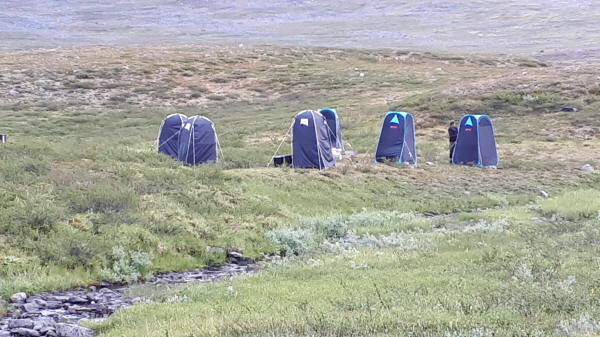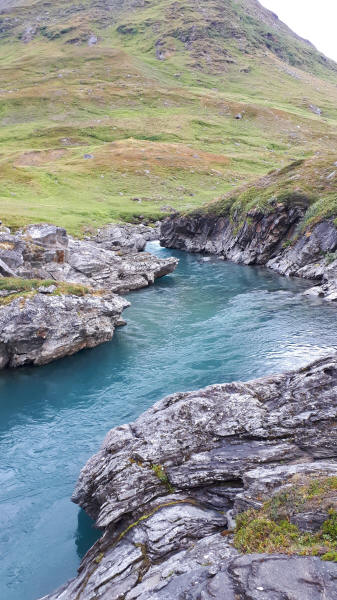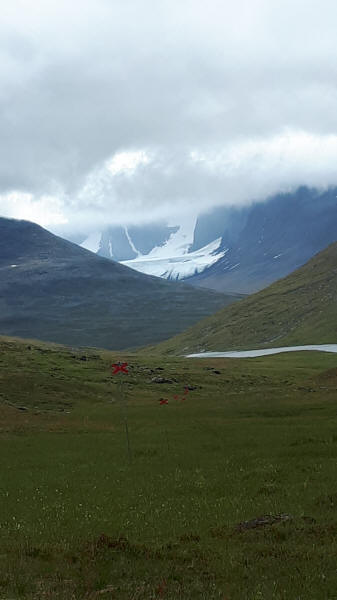E1 Norway Abisko - North Cape

Ia.33 Section Sälka - Sälka 20 km
As most any time I started early in the morning. All around the hut Fjellräven Classic hikers had set up several hundred tents. Most of them where not up yet. The first thing I arrived at was the Sälka control point. Here Fjellräven had set up several small toilet shelters. Not far after I left Kungsleden and continued hiking on Nordkalottleden. Until crossing River Tjäksajokk on a bridge the trail was easy to navigate. On the other side it became step by step worse. Reaching the first lake the trail just disappeared. I went down to the lake shore and followed it until reaching lakes end. From here I went steadily uphill until finally arriving at trail markings again.
When arriving at the second lake my shoulder was reacting rather painfully. I decided to take a rather early lunch break. I wanted to see what the shoulder would say after the break. After a few steps it became clear that I could not continue like this. What should I do? After some debating I decided to hike back to Kungsleden and therewith into civilisation. I had to carry the backpack on one shoulder only. The medical service at control point Sälka could not help me as I had expected. I slowly moved on to Sälkastugorna. After talking to the host I decided to use the SOS button on my SPOT for the first time ever. Walking back to Abisko would have been impossible for me. After a while the Swedish Police contacted the hut via special phone. The host spoke with them and as I was not in critical condition it was agreed that we would get into contact next morning. I staid for the night at the hut.
Sälkastugorna with a lot of Fjellräven Classic hiker tents
Toilet tents at control point Sälka for Fjellräven Classic hiker
Nordkalottleden crosses River Tjäksajokk on a bridge
View back from Norkalottleden to Kebnekaise in the clouds
Point of turn around at second lake on Nordkalottleden due to my damaged shoulder
Sunset at Sälkastugorna with some Fjellräven Classic tents





